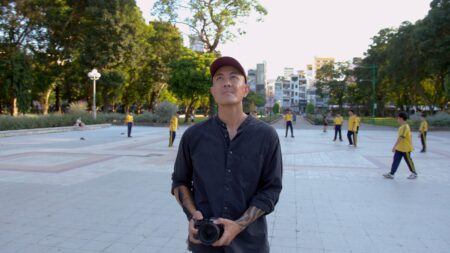Deep Focus
Rise to Rust, Rust to Ashes, Ashes to Rise
Perhaps we are, as a Western culture, a little too obsessed with preservation.
We can talk about rust as an end-of-life for iron, or we can see it more broadly, as a part of a cycle. All things, all creatures, will age-change-die and diminish into dust. This is the elemental design of our planet. What we claim for ourselves, nature reclaims, eventually. All of it.
Eastern philosophy seeks to accept the cyclical and degenerative nature of this worldly plane. This is a spiritual landscape populated by characters like Shiva, a “destroyer and transformer” and part of the major trinity within the Hindu faith. This, in contrast to the favorite son of Western religion, who was barely dead three days before making his comeback. We Westerners—we Detroiters—are always looking for a comeback, seduced for long decades by some suggestion that it’s just around the corner. We Americans, always worshipping and seeking to reclaim youth, continuously attempt to permanently lock down happiness, endlessly reliving our glory days, and, most toxically, forming an electorate convinced it can “make America great again” by somehow dialing back the clock to reinvigorate white supremacy.
How’s that going for us?
Iron is an element, which is to say, it is not a human invention. The Iron Age is significant to human history because the distillation of this element enabled the production of stronger tools, used primarily at that time in support of agricultural practices that would lead humanity to its first break with nature—the accrual of material surplus.
“We’re not destroying the world because we’re clumsy,” says Ishmael, a sentient gorilla and mentor to the narrator of Daniel Quinn’s Ishmael: An Adventure of the Mind and Spirit, “We’re destroying the world because we are, in a very literal and deliberate way, at war with it.” Ishmael directly attributes the process of agriculture as foundational to the development of societies with specialized labor, and subsequently paving of the way for religions and cultures that designate man as inheritor and steward of the Earth. We believe that we, humans, are the point of life on this planet.
Prior to industrialization, the creation of objects was driven by need. Mass production operates on the opposite principle: you lower the cost of production by making a lot of a product at once (a surplus), and then you sell off the surplus as need arises (demand). But if need doesn’t arise, you are merely left with a costly surplus—this system requires that you not only manufacture objects, but also the desire for them.
But surplus iron, once distilled, does not long remain iron. It responds to oxygen in water or air—that is to say, the basic preconditions of anywhere life on Earth can be found—to become iron oxide, or, informally, rust. If you analyze rust, you will find that the same atoms from the original material are still present, but in different places. This is a process of maturity and aging.
Cities with lots of resources—just like people with lots of resources—will resist this aging process, affording themselves infinite face-lifts, smashing things down and building them back up with newer, more synthetic materials, until they become unrecognizable. But our city is honest, Midwestern, sincere, and for long decades, it has simply gone to rust. There is heartbreak in that, as with the loss of all things, but there is also truth, intentionality, trace memory, and beauty. We grow wild, in ways unplanned by society.
Humans, in our infinite capacity to complicate things, created steel—an alloy that enhances iron with carbon, to make it stronger. To make machines of war, and industrial equipment, buildings that thrust high into the skies, and of course, cars.
In his influential essay, “Future City,” political theorist and literary critic Frederic Jameson says, “It is easier to imagine the end of the world than to imagine the end of capitalism.” But Detroit has dared to imagine it. The Detroit I know, the one I came to, was a post-capitalist landscape. No plenty, no excess, but people living in accordance with need, and attempting to hold together only what could fit in their hands. Ostensibly, the surplus created by manufacturing in Detroit languishes in disuse, but in reality, we Detroiters, we artists, waste nothing. It has been used to build ziggurats inside empty factories; functioning windmills; retaining walls and hügelkultur mounds for agricultural projects; sanctioned and unsanctioned works of installation art all over the city.
“You’re captives of a civilizational system that more or less compels you to go on destroying the world in order to live,” says Ishmael. “You are captives—and you have made a captive of the world itself. That’s what’s at stake, isn’t it?—your captivity and the captivity of the world.”
That is, in fact, what’s at stake. Detroit gave rise to industry, and industry gave disaster in return. And yet, Shiva is not only a destroyer, but a transformer—the wheel has turned again. Not in the direction of the comeback narrative, being fueled on small scale in a few majority-white, majority-business-oriented neighborhoods. In the direction of verdant fields, roving pheasants, and, to turn a phrase from elder artist Olayami Dabls’ iconic west-side work of installation art, rocks teaching rust how to return to earth. If, as Western religion would have it, we are made in the image of our Creator, then Detroiters prove it by remaking the world around them, one rusty piece at a time.
We hope, we truly do, for better things.

